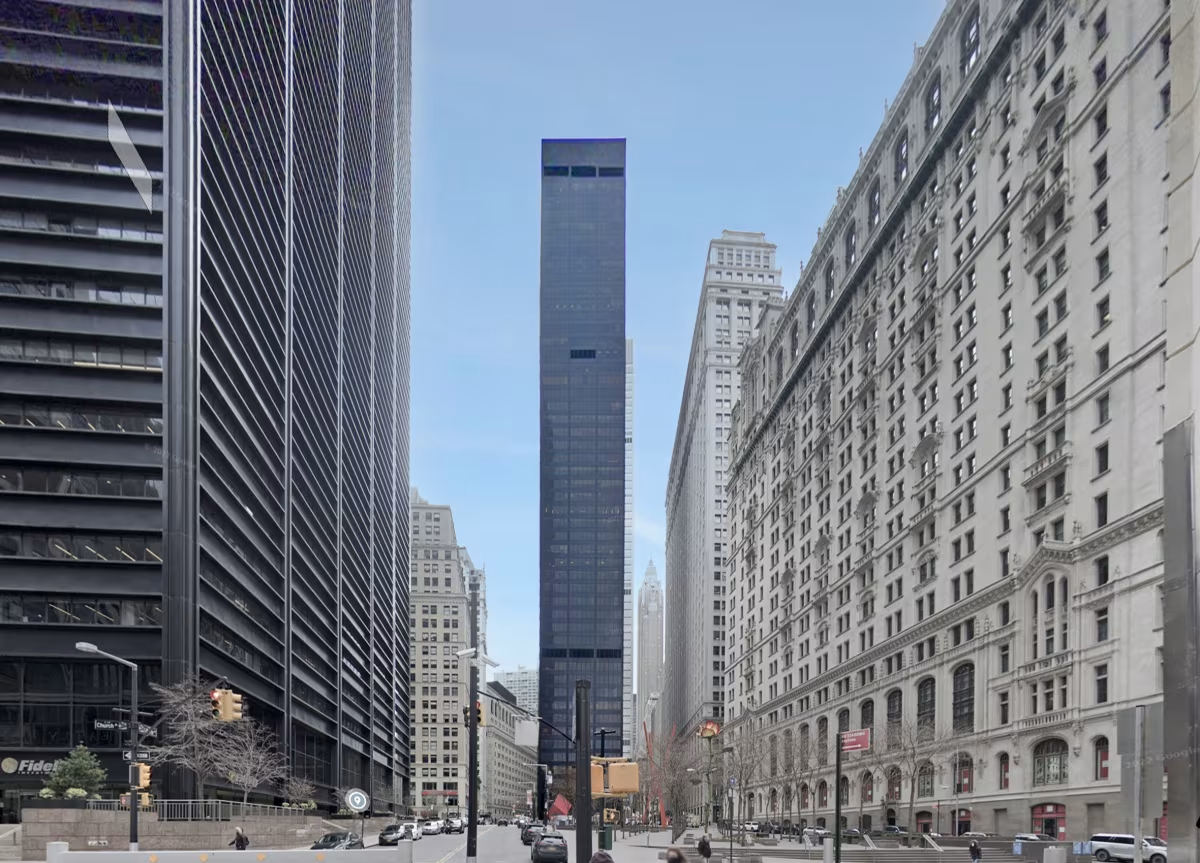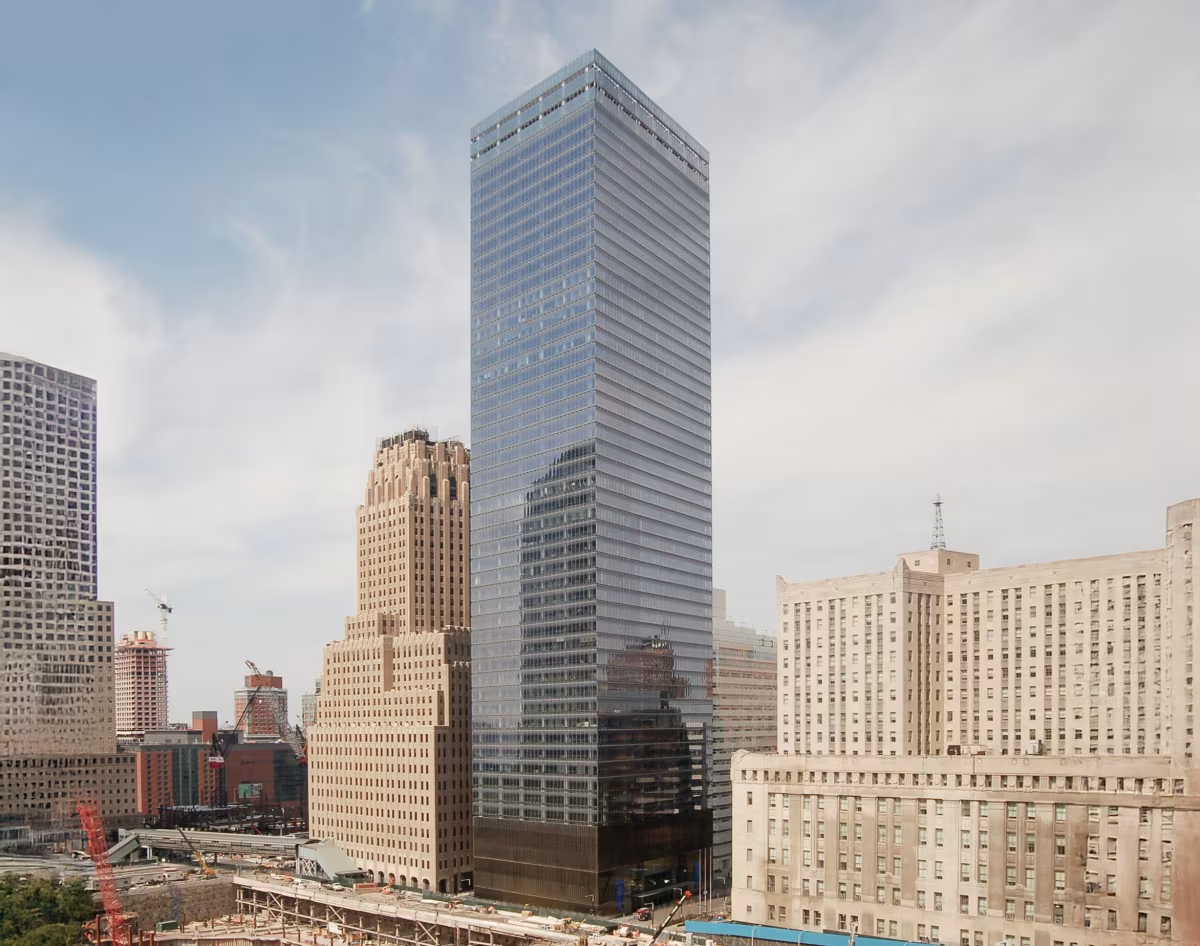140 Broadway vs 7 World Trade Center


Comparing the 140 Broadway and the 7 World Trade Center is particularly interesting because they share the same skyline in New York, NY, and were both designed by Skidmore, Owings & Merrill. However, they were completed more than 39 years apart.
This offers a unique perspective on how the architect's style and the city's architecture evolved over time.
Height & Size
These two towers present an interesting contrast in their proportions. The 7 World Trade Center rises higher at 741ft (226m), while the 140 Broadway reaches 689ft (210m). However, the 140 Broadway accommodates more floors with 52 levels above ground, compared to 51 floors in the 7 World Trade Center.
This suggests different approaches to interior space design. The 7 World Trade Center has an average floor-to-floor height of approximately 4.4m, while the 140 Broadway has more compact floors averaging around 4m each.
These different proportions likely reflect the specific needs each building was designed to serve, whether driven by zoning regulations, client requirements, or the intended use of the spaces within. The contrast shows how architects can achieve different spatial experiences even when working with similar overall building scales.
Architectural Style
The 140 Broadway was designed in the International Style style, while the 7 World Trade Center reflects the principles of Contemporary.
At the time of their completion, both styles were well established. This makes the comparison especially interesting, because both buildings represent a dominant aesthetic at a particular point in time.Built 39 years apart (1967 vs 2006), these two buildings are a perfect example of how different architectural styles have shaped the architectural landscape of our cities over time.
Uses
Both the 140 Broadway and the 7 World Trade Center were designed to serve as commercial towers, and that has remained their main use since their completion, serving similar roles in the urban fabric.
Structure & Facade
Both the 140 Broadway and the 7 World Trade Center rely on a Frame structural system.
A frame structure uses a grid of columns and beams to carry the building's loads. This frees the walls from structural duties, allowing for flexible floor plans and larger windows.
They also employ the same type of facade, a Curtain Wall facade.
A curtain wall is a non-load-bearing facade hung from the structural frame. It is anchored to floor slabs and transfers only its own weight and wind loads, allowing for sleek, glassy exteriors.
| 140 Broadway | 7 World Trade Center | |
|---|---|---|
| Skidmore, Owings & Merrill | Architect | Skidmore, Owings & Merrill |
| 1962 | Design Ended | 2002 |
| 1964 | Construction Started | 2002 |
| 1967 | Year Completed | 2006 |
| International Style | Architectural Style | Contemporary |
| Commercial | Current Use | Commercial |
| 52 | Floors Above Ground | 51 |
| 3 | Floors Below Ground | 1 |
| 210 m | Height (m) | 226 m |
| 24 | Number of Elevators | 29 |
| Frame | Structure Type | Frame |
| Steel | Vertical Structure Material | Steel |
| Concrete | Horizontal Structure Material | Poured Concrete Over Metal Decking |
| No | Facade Structural? | No |
| Aluminum, Glass | Main Facade Material | Glass |
| Diesel Construction Company | Main Contractor | Tishman Construction |
| Erwin S. Wolfson | Developer | Silverstein Properties |
| Jaros, Baum & Bolles | MEP Engineer | Jaros Baum & Bolles |
| James Ruderman | Structural Engineer | WSP Cantor Seinuk |
| Isamu Noguchi | Collaborating Artist | Jenny Holzer |
| NY | State | NY |
| New York | City | New York |
| 140 Broadway | Address | 250 Greenwich Street |